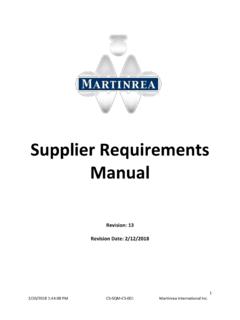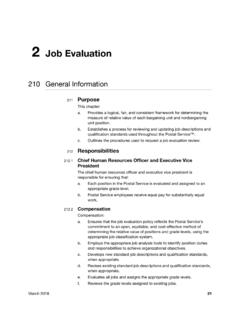Transcription of FUNCTIONAL EXPENSE TAX BRIEF ALLOCATION FOR YEO & …
1 YEO & YEOCPAs & business CONSULTANTSTAX BRIEFOCTOBER EXPENSE ALLOCATION FOR NONPROFITS AFTER FASB ASU 2016-14 YEO & YEOCPAs & business CONSULTANTSYEO & YEO | 2 The Importance of FUNCTIONAL EXPENSE ReportingMany nonprofit organizations have a reason to report expenses by FUNCTIONAL EXPENSE classification. Most commonly, the expenses are presented in generally accepted accounting principle (GAAP) financial statements as a statement of FUNCTIONAL EXPENSE or footnote analysis of expenses by their nature and function, and/or on the face of the statement of activities. Expenses may be similarly reported for cash or income tax bases of accounting. If the nonprofit is a 501(c)(3) or 501(c)(4), presenting by FUNCTIONAL EXPENSE classification is also necessary for IRS Form 990 meeting compliance requirements, there are very good reasons to care about the FUNCTIONAL EXPENSE classification.
2 Financial statement readers want to see that the money provided to an organization is being effectively used to meet the organization s purpose. Grantors will look at these expenses and percentages to determine whether to make grants; volunteers may look at these percentages to determine whether it is a worthy cause to which to devote their time; contributors may look at these amounts to gauge how much of their dollars will go to their purpose. Do not fall into the trap of trying to get program services to be as close to 100 percent as possible. A variety of potential undesirable consequences may result from misreporting the organization s FUNCTIONAL EXPENSE classification. First, the IRS may use extreme imbalances in percentages to select organizations for audit to ensure they are truly providing an exempt function.
3 Second, financial statement users may be skeptical of unrealistically high amounts of program, management or fundraising expenses, which could prevent the organization from receiving funding. Third, misidentifying an EXPENSE s FUNCTIONAL EXPENSE classification can lead management to make poor or miscalculated decisions regarding the organization s future. Some organizations try to only pay for programmatic service expenses; that may work in the short term for a small, volunteer-driven organization, but it will ultimately limit the organization s ability to grow. A growing organization will have increasing revenues, and with more revenue will come more EXPENSE . The additional EXPENSE could come in the way of fundraising expertise for entities that are contribution driven or membership development expertise for those that are membership driven.
4 A growing organization will require the underlying business systems and personnel to sufficiently grow with EXPENSE ALLOCATION FOR NONPROFITS AFTER FASB ASU 2016-14 YEO & YEO | 3 For example, if you double revenues, and therefore likely expenses, one would expect more paperwork to follow. Under this scenario, do you really anticipate the exact same number of accountants can be used to keep the books and records? If so, what shortcuts must they make in order to keep up with the paperwork? Do they now skip certain internal controls, for the sake of time, which could provide opportunity for fraud? A struggle will always exist between those who understand nonprofits and the need to devote a reasonable amount of resources to non-programmatic expenses, and those who do not understand nonprofits and believe that every dollar should be programmatic.
5 Those who are uneducated about the complexities of operating a nonprofit will need some education as to the value of management and general and fundraising expenses. If your organization devotes a reasonable amount to these FUNCTIONAL categories, you will have a legitimate business case to present to EXPENSE ClassificationsThe first consideration for preparing FUNCTIONAL expenses is what line items make up natural expenses. In most cases this will be a straightforward exercise, but under FASB ASU 2016-14 Not-for-Profit Financial Reporting and Disclosures (ASU 2016-14) there are a few nuances. First, all external and direct internal investment expenses (that are not for programmatic investing) must be netted against investment return and shall not be included in the analysis of expenses by nature and function.
6 This means under GAAP, you are no longer permitted to have investment expenses, other than for programmatic investing, in the statement of FUNCTIONAL expenses. Second, all other expenses shall be reported by their natural classification. For example, if cost of goods sold appears on the statement of activities, this must be broken down into its natural classification of salaries, fringe benefits, and purchased goods for the analysis of expenses by nature and function. If special event costs are netted with revenues on the statement of activities, those special event costs must also be included in the natural classification, such as rent or food, in the analysis of expenses by nature and function. The second consideration in determining how to do a FUNCTIONAL ALLOCATION is understanding the differences between the types of FUNCTIONAL EXPENSE classifications.
7 Every natural EXPENSE has to be allocated into one or more FUNCTIONAL categories. If your organization is required to do GAAP financials, this ALLOCATION must be done in grid format with each natural EXPENSE listed as a separate row and each FUNCTIONAL category as a separate column. Every natural EXPENSE must be broken out into the individual FUNCTIONAL categories on an analysis of expenses by their nature and function; you cannot simply have a single line to do an indirect cost third major consideration is understanding that an indirect cost for government grant purposes has no bearing on the FUNCTIONAL EXPENSE category for financial statement or Form 990 purposes. These two terms are not synonymous. The cost ALLOCATION plan used for financial statement purposes may not match what is needed for indirect cost allocations under the federal grants, or any other EXPENSE ALLOCATION FOR NONPROFITS AFTER FASB ASU 2016-14 YEO & YEO | 4 What is a program service EXPENSE ?
8 Why is the organization tax exempt? What good does the organization do that merits tax exempt status? What things are done that directly result in that good occurring? What are the expenses needed to do those things that directly result in the good occurring? Examples include: Salaries of direct program workers. Salaries of those who are direct supervisors of the direct program workers. Salaries of those who are in charge of tracking eligibility for program services. Benefits related to those individuals. Costs related to those individuals having a place to work, for example rent, telephone, utilities. Costs that directly benefit the program. For example, if the program is an educational program, the cost of materials that are handed out to the is a fundraising EXPENSE ? A fundraising EXPENSE is any EXPENSE incurred for the purpose of obtaining contributions.
9 A contribution is something of value provided to the organization whereby the donor receives nothing or something of substantially less value in return. Note that if an organization has contribution revenue, there is a presumption that it has fundraising expenses. If your organization has contribution revenue and no fundraising expenses, document how the fundraising was done completely by volunteers with no utilization of any organization resources. Examples of fundraising include: Salaries of fundraisers or fund development. Salaries of grant writers, if those grants are contributions. Benefits to those individuals. Costs related to those individuals having a place to work, for example rent, telephone, utilities. Postage and printing costs for appeals to the public for contributions.
10 Maintaining donor lists. Publicizing and conducting fundraising is a membership development EXPENSE ? This is similar to fundraising, but instead of obtaining a contribution, the organization is obtaining an exchange transaction for membership revenue where the purchaser receives something of commensurate value for their payment. Examples include: Salaries of those trying to obtain additional members. Salaries of those who are responsible for assisting members with membership benefits. Benefits to those individuals. Costs related to those individuals having a place to work, for example rent, telephone, utilities. Costs of membership recruitment EXPENSE ALLOCATION FOR NONPROFITS AFTER FASB ASU 2016-14 YEO & YEO | 5 What is a management and general EXPENSE ? Everything else is a management and general EXPENSE .







